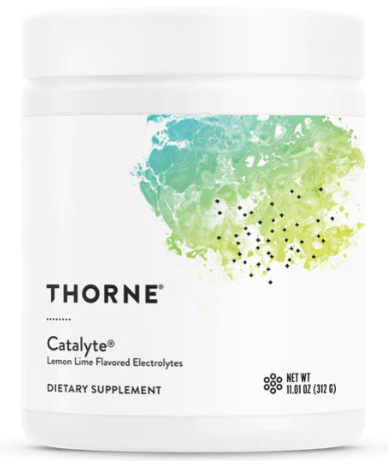Ask a Practitioner: What's the Deal with Salt?
Similar to fat, salt has gotten a bad rap these last 40 to 50 years or so—mostly due to the link between high sodium intake and hypertension. Like many things in relation to health, the facts around salt are nuanced. Salt has been part of human civilization for thousands of years—it has been used as currency (where the terms “salary” and “worth your salt” come from), was critical for food storage and preservation before refrigeration, but has also been labeled as the “single most harmful substance in food”. We use salt now to enhance the flavor of our food and to ferment vegetables, but salt can also be used for poaching eggs, preventing fruit from browning, and even cleaning pots and pans. But do our bodies need salt, and if so, how much?
We’ll discuss the difference between salt and sodium, what our bodies do with the minerals in salt, and how much salt (and what type) you might need to include in your diet.
What is in salt, anyway?
Many people think salt and sodium are essentially the same thing. But salt is actually a mineral crystal composed of several different minerals, including sodium chloride, magnesium, potassium, calcium, phosphorus, and a number of other trace minerals. There are hundreds of different salts available in stores, from pink Himalayan salt, Hawaiian sea salt, Celtic sea salt, Kosher salt, and the standard iodized table salt. Each variety of salt has a slightly different chemical makeup, some with higher levels of sodium chloride than others, some with higher amounts of trace minerals than others.
Typical iodized table salt is often refined to remove most minerals other than sodium chloride to give it a consistent color and flavor, treated with anti-caking agents to keep the salt from clumping, and fortified with iodine. Iodine is an essential nutrient, meaning we must get it from our food, and was added to table salt beginning in the 1920’s to help curb iodine deficiencies in parts of the midwest. These days, iodine deficiency is relatively rare in the U.S., and our access to iodine-containing foods like eggs, seaweed, fish, and seafood is much better than it used to be.
Sea salt, as well as other types of mined rock salts, are generally less processed than table salt, and do not typically have added iodine. While their sodium content is similar to table salt, they do retain the other macro and trace minerals that table salt has had removed. These minerals, especially magnesium, calcium, and potassium, make up the electrolytes that help fluids move between cells, and conduct electricity through your body.
What are electrolytes?
As mentioned above, electrolytes are the minerals that, among other things, help maintain your body’s electric charge. They also keep fluids moving into and out of our cells, keep us hydrated, and help regulate nerve & muscle function. Electrolytes minerals are sodium, potassium, calcium, magnesium, bicarbonate, chloride, and phosphate. We tend to get most of these in trace amounts through the food we eat, but some, like magnesium, potassium, and calcium, we need in larger amounts.
Magnesium is necessary for proper relaxation of muscles, while calcium, sodium, and potassium are needed for muscle contraction. If you are an active person who exercises a lot, especially with weights, you may need to add electrolytes to your diet to help prevent muscle cramps.
There are a number of ways to supplement electrolytes; you can take individual nutrient supplements, like magnesium or calcium, or you can take an electrolyte powder that more or less contains everything you need to rehydrate your body. Our favorite is the Thorne Catalyte Lemon Lime. It contains all the electrolyte minerals like magnesium, sodium, and potassium, along with other micro minerals like zinc and chromium, along with vitamins C, B6, and B12.
Do we need salt?
Salt—quality, unrefined salt—is another good way to get more minerals and electrolytes into your body. We discussed the importance of electrolytes above, but those trace minerals are important as well. Trace minerals are those minerals that you need in very small amounts, but are still critical to your health. Zinc, for example, is important for immune function, and selenium is necessary for detoxification support.
Salt—quality, unrefined salt—is another good way to get more minerals and electrolytes into your body.
The main mineral in salt is sodium chloride, which also tends to be the mineral that most people are concerned about. Traditional medicine recommends lower sodium intake as being helpful in lowering blood pressure. However, sodium is a necessary mineral and electrolyte, helping regulate muscle contraction and relaxation, nerve impulses, and maintain hydration in your cells. So we definitely need sodium, along with the other minerals and trace minerals found in salt, but the question is how much do we need?
How much salt should I eat?
The most common recommendation for sodium in our diet is no more than 2,300 mg per day, but ideally around 1,500 mg per day (about .30 teaspoon). As mentioned above, the goal with this recommendation is to keep blood pressure low, the idea being that high sodium levels in the blood increases blood pressure. On average, most Americans eat about 3,400 mg of sodium a day. Unfortunately, most of that sodium does not come from well-seasoned, home-cooked food, but rather highly refined, processed, and packaged foodstuffs.
More recent studies evaluating the relationship between salt in the diet and blood pressure have shown that sodium levels above 7,000 mg per day, and below 3,000 mg are associated with the greatest cardiovascular risk, but a range of sodium intake between 4,000 - 6,000 mg per day was associated with the lowest cardiovascular risk.
In terms of salt, which is not the same as sodium, this roughly equates to between 1.5 and 3.5 teaspoons of salt per day.
What this tells us is that our bodies need ample sodium, along with all of the other macro and trace minerals found in salt, to function properly. It also means that there is a much greater range in how much sodium we need as individuals. Some people may need more salt in their diet; if you are someone who is very active for example, or if you live in a humid climate. Age, gender, and health status all play into how much salt you need, as well. Discovering how much salt you need will take some trial and error, but the good news is you no longer need to feel guilty about salting your home-cooked meals to taste!
Try this: Add a pinch of sea salt to a glass of water each morning and see how you feel. Do you feel hydrated and energized? Don’t be shy about adding a pinch of salt to a glass of water periodically throughout the day, as well.
If you’re interested in learning more about how minerals work in your body, what supplements might be best for you, or just want help dialing in your diet, stress, and sleep, a Curated practitioner is ready to help you get started. 
About the Author
Joel is a Nutritional Therapy Practitioner who began his health journey when he decided to quit cigarettes for good. By finding the motivation to make lifestyle changes in diet, exercise, stress, and sleep, he feels healthier in his 40’s than in his 20’s, and wants to make sure he will be around for a long time. Once he saw results in himself, Joel wanted to use his passion for wellness to help other people. Joel has a private practice in Northern California where he helps clients achieve better energy, focus, and connection to their bodies through bio-individual diet and lifestyle changes. Learn more about Joel.
The information presented on this website is intended for educational purposes only. Statements within this site have not been evaluated or approved by the Food and Drug Administration. This content is not intended to diagnose, treat, cure, or prevent any specific condition or disease, nor is it medical advice and should not be considered a substitute for professional medical expertise. Readers of this content are advised to consult their doctors or qualified health professionals regarding specific health conditions or concerns. One should always consult a qualified medical professional before engaging in any dietary and/or lifestyle change or new health program. Curated Wellness does not take responsibility for any health consequences of any person or persons following the information in this educational content.








![Super Greens Powders Reviews [What to Consider]](http://curatedwellness.com/cdn/shop/articles/7fd02c54f71c0700bd1cd2687e4c659a_{width}x.jpg?v=1730843999)